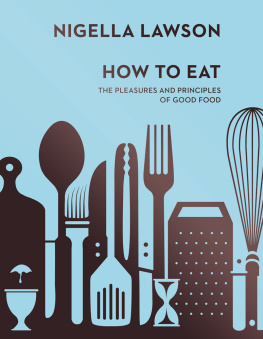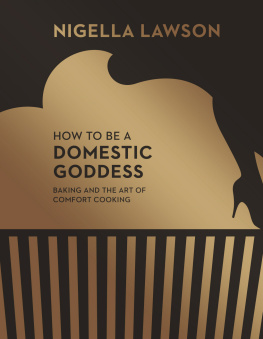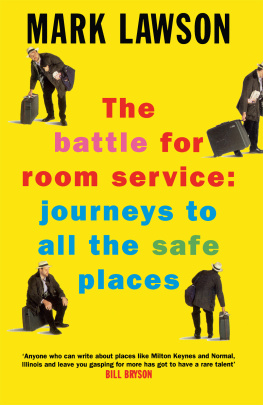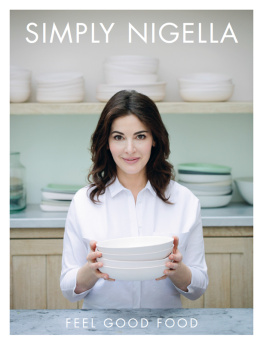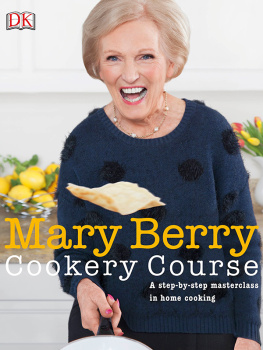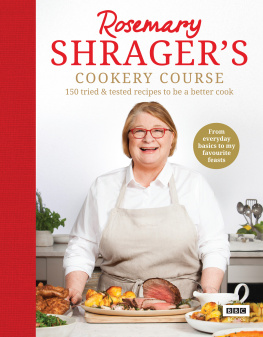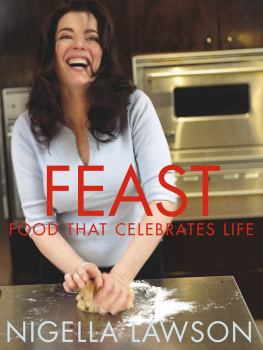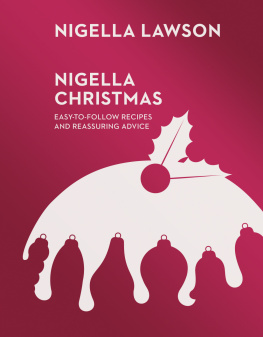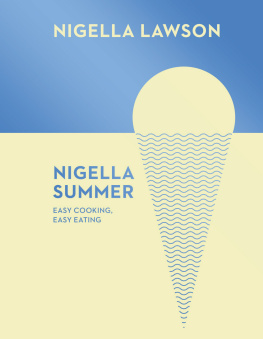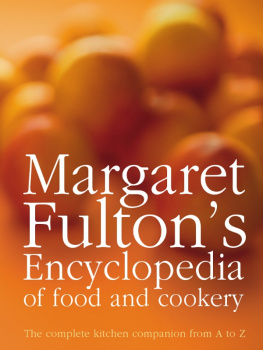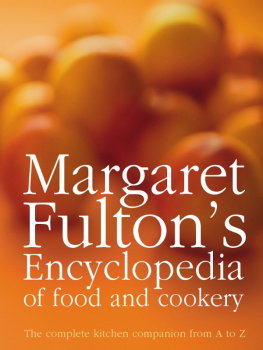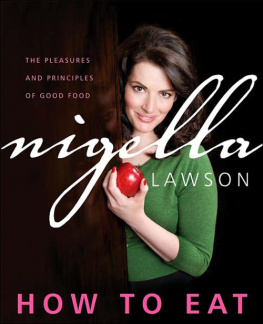about the book
Cooking is not just about joining the dots, following one recipe slavishly and then moving on to the next. In cooking, as in writing, you must please yourself to please others.
Hailed by chefs, reviewers, cookery writers and millions of home cooks worldwide as one of the best cookery books ever written, How To Eat is more than just an imaginative collection of over 350 delicious, simple recipes. Combining Nigellas down-to-earth, practical cookery advice with a passion for food and a friendly, chatty style, you will need two copies of this glorious classic: one for the kitchen, one for the bedside table.
This is Nigel Slaters all-time favourite cookbook: If I could only keep one cookbook, this would be it. How To Eat suits the way I cook. It is as if Nigella is sitting on a stool next to me in the kitchen as Im cooking ... With every page you know she loves this stuff, and she wants you to love it too. Its a very, very special book for me. My own copy is falling apart.
With gloriously witty food writing, easy recipes, basic cooking tips and a beautiful hardback design, this is a book you will treasure for many years as well as a delicious gift for friends and family.
Basics from easy bread recipes and basic roast chicken to sauce ingredients and seasonal foods
Cooking in advance slow cooking, marinades and stress-free, easy recipes
One and two cooking for one and meals for two people, from the practical to the romantic
Fast food easy recipes and quick meal ideas
Weekend lunch Saturday and Sunday lunch menus, for entertaining friends and family meals
Dinner complete dinner menus for any occasion, from an elegant dinner party to a simple supper
Low Fat healthy recipes and low-fat meals that still burst with flavour
Feeding babies and small children weaning recipes, easy family meals and dishes to tempt that fussy eater
about the author
I am unapologetic about being a home cook rather than a chef.
Real cooking, the sort that goes on in homes, does not have to be tricksy or difficult. A dish of chicken poached with leeks and carrots definitely isnt fancy. But it tastes good, and feels essentially nourishing, to both body and soul, to cook and eat.
I want you to feel that Im there with you, in the kitchen, as you cook. My books are the conversations we might be having.
Nigella Lawson has written nine bestselling cookery books, including the classics How To Eat and How to Be A Domestic Goddess the book that launched a thousand cupcakes. These books, her TV series and her Quick Collection apps, have made her a household name around the world. In 2013 she was one of the Observer Food Monthlys ten Chefs of the Decade.
www.nigella.com
@Nigella_Lawson
NIGELLA COLLECTION
BY NIGELLA LAWSON
HOW TO EAT
THE PLEASURES AND PRINCIPLES OF GOOD FOOD
HOW TO BE A DOMESTIC GODDESS
BAKING AND THE ART OF COMFORT COOKING
NIGELLA BITES
NIGELLA SUMMER
EASY COOKING, EASY EATING
FEAST
FOOD THAT CELEBRATES LIFE
NIGELLA EXPRESS
GOOD FOOD FAST
NIGELLA CHRISTMAS
NIGELLA KITCHEN
RECIPES FROM THE HEART OF THE HOME
NIGELLISSIMA
INSTANT ITALIAN INSPIRATION
CONTENTS
List of Recipes
PANCHPHORAN ALOO
(POTATOES IN WHOLE SPICES)
IN MEMORY OF MY MOTHER, VANESSA (19361985)
AND MY SISTER THOMASINA (19611993)
AND FOR JOHN, COSIMA AND BRUNO
WITH LOVE
preface to the new edition
HOW TO EAT was born four years after my daughter, two years after my son: my third child. Although, the truth is the book had been gestating long before either of its elder siblings. Its hard to believe now that this huge book was written in just six weeks. But its almost as if I had spent so long not writing it that the words were ready to rush out onto the page. And if I have had the opportunity now to revise some of the exuberant outpourings, I havent wished to. How to Eat is what it is: of a particular time and place in my life and, as I have learnt over the ensuing years, like a child, it has become its own thing, and for me to start revising and fiddling now would be a dishonest enterprise.
Nor do I want to change it. I stand by it and its manifesto, which is no less the manifesto that underpins all my consequent books that cooking should not be considered the domain of the expert, that food is more than just fuel but says something unarguably authentic about the way we live and feel, and that perfectionism is the enemy of any kind of pleasure in the kitchen.
But still, How to Eat has a slightly different character than the books that have followed it. Many instructions are no more than enthusiastic suggestions, some of the recipes reveal themselves in the narrative, rather than in the more familiar form, and it is not illustrated. I dont believe it would be possible for a first-time author, or any food writer, to have such a book published now. And yet and I am prouder of this than almost anything else it is still in print, and its readers seem to have the same close, protective relationship with it that I do. Whenever I have a new book out and am giving a book signing, I always feel a particular sense of connection with those who bring their old, battered, food-spattered copy of How to Eat to be signed alongside.
This renewed edition does not, I believe, betray the original. Anyone who bought How to Eat in 1998 and has been cooking from it ever since, might reasonably be feeling the need at least in the kitchen for a fresh copy (not that I would ever want anyone to put aside their old one) and there are now cookbook readers who were in the cradle when How to Eat was first published. This book is a compendium of my life in the kitchen, written from the vantage point of someone who loves eating but has no special skills. I thought it would be the only cookery book that Id write, though that turned out not to be so. How to Eat made me love writing about food so much, I havent been able to stop. I know from letters I have received over nearly two decades that it has taught many to love cooking, and to feel safe in the kitchen, and to those people I remain profoundly grateful.
Of course the absence of photographs means that there is more room for recipes, for suggestions, for conversations about food. I hope I am not betraying any of my other titles when I say that this book would give anyone enough to cook for a lifetime. I still return to How to Eat when considering what to make for myself or others, and it remains a steadfast kitchen companion, written for those who want to read about food as well as cook it.
NL
London
February 2014
preface
COOKING IS NOT about just joining the dots, following one recipe slavishly and then moving on to the next. Its about developing an understanding of food, a sense of assurance in the kitchen, about the simple desire to make yourself something to eat. And in cooking, as in writing, you must please yourself to please others. Strangely it can take enormous confidence to trust your own palate, follow your own instincts. Without habit, which itself is just trial and error, this can be harder than following the most elaborate of recipes. But its what works, whats important.
There is a reason why this book is called How to Eat rather than How to Cook . Its a simple one: although its possible to love eating without being able to cook, I dont believe you can ever really cook unless you love eating. Such love, of course, is not something which can be taught, but it can be conveyed and maybe thats the point. In writing this book, I wanted to make food and my slavering passion for it the starting point; indeed for me it was the starting point. I have nothing to declare but my greed.

